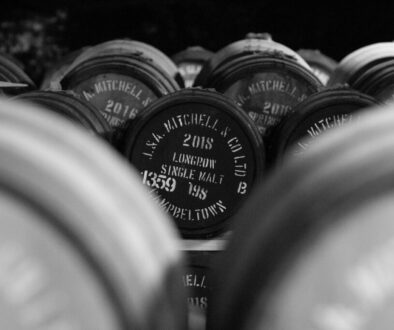
Your guide to the whisky regions of Scotland
Need to brush up on your whisky facts? Wondering where to start your journey into the world of Scottish whisky?
We cover the basics of the five official Scottish whisky regions, and their traditional characters.
- Why does region matter?
- The five whisky regions of Scotland

Why do regions matter?
Scottish whisky has a unique and distinctive signature, yet even within the umbrella of Scottish whisky there is a diverse scope of tastes and characters that reflect the landscape and the rich history of whisky in Scotland.
Geography plays a surprisingly influential part in the formation of each area’s whisky. For example, where peat is used for drying the malt, variations in peat found in each region will impact the whisky. The local climate will also influence the whisky as it matures in casks. Everything from the water, supply through to the historic ease of access of each region has shaped the taste of Scottish whisky and produced distinctive flavours and styles.
What are the whisky producing regions of Scotland?
Historically there were two main whisky producing regions in Scotland; the rugged and relatively inaccessible Highlands and more temperate Lowlands. More recently the Highlands has been sub-divided to reflect the subtle but distinct variations in character within the region.
TODAY WE RECOGNISE FIVE DISTINCT REGIONS:
- Speyside
- The Highlands
- Campbeltown
- Islay
- The Lowlands
Speyside
The Speyside region became distinct from the Highlands in 2009, when its unique signature within Scottish whisky was formally recognised in the Scotch Whisky Regulations. Speyside is in north-east Scotland and the region is defined by the distiller’s proximity to the river Spey, a source of high-quality, low-mineral water that produces excellent whisky. Speyside has the largest number of distilleries of all the regions in Scotland and produces more than 60 per cent of Scotland’s single malt whisky.
Historically the Spey valley was prime for growing the barley needed for whisky production and was also remote enough to be beneficial (as duty collectors didn’t often visit) but not so isolated that it has impacted their modern production. More than a third of all Scottish distilleries are in the Speyside region and it is the home of the renowned distillers Glenlivet and Macallan as well as many more.
Speyside whisky is varies in taste but is generally known for being robust, floral and fruity alongside the characteristic flavours of malt, dried fruit and smoke. Additional variations are chosen by the individual distiller according to the house’s traditions and still type.
Highlands
The Highlands region covers the largest part of Scotland. Even with the more recent sub-division of the region to separate Speyside and the island regions, there is considerable variation within the character of Highlands whisky.
Traditionally Highlands whisky isn’t as sweet as those from Speyside, doesn’t have as many brine and sea flavours as the Island regions, and is thought of as more robust than whisky from the Lowlands. However, the Highland’s region covers most of central Scotland, stretching from mountain tops and rolling fens to the seashore. So you can expect each distillery to be influenced by their micro-locality in flora, water source and climate, not to mention their personal history and traditions. In turn the whisky each distillery creates will reflect that as well, creating a highly diverse region of whisky.
The Orkney Islands are officially included within the Highlands whisky region but some people choose to represent them as a sixth region.

Campbeltown
With just three distilleries remaining in the region, Campbeltown makes up for what it lacks in quantity by producing distinctive, quality whisky. Historically the remote island was home to 34 distilleries, when the difficult access discouraged the tax man from paying too much attention and the distinctive whisky style generated an early following earning it the moniker of ‘The Whisky Capital of the World.’ The first world war and prohibition were the start of a steady decline through the 20th century, where only Springbank and Glen Scotia survived.
The last 15-20 years has seen a revival of distilling on the iconic island and the reopening of Glengyle in 2004 is seen as an encouraging sign for Campbeltown whiskies.
Campbeltown whiskies are known for the brine flavours generated as the casks are matured in warehouses by the sea, combined with smoke and bitter notes of vanilla, toffee and dried fruit.
Islay
Islay is the southernmost of the Hebridean Islands on the west coast of Scotland, and at eight distilleries it is the second smallest region in terms of distillery numbers. Like Campbeltown, Islay may be small but its whiskies pack a distinctive punch that have gained them world renown and mean it is the source of some of the most sought-after whiskies in Scotland. Ardbeg, Bruichladdich, Laphroaig and Bowmore are just some of the illustrious distilleries producing whisky in Islay today.
Islay is renowned for its smoky flavours combined with brine and seaweed tones that reflect the rugged island location and climate. Not all Islay whiskies are peated however, and there are also tones of rich, fruity apple to be enjoyed if peat is not to your taste.
Lowlands
The Lowlands region covers most of southern Scotland where the terrain is generally softer and more suited to arable farming. This is prime barley producing land, however most of the whisky produced in the Lowlands is grain whisky destined for blends. With a few notable exceptions producing the historically light and easy-drinking whisky.
Lowlands whiskies are known for grassy flavours and a cosy taste of cinnamon and toast alongside sweet, flowery notes. They aren’t generally known for their peat and smoke flavours, but these can still be found as older traditions are recalled for the modern market.












